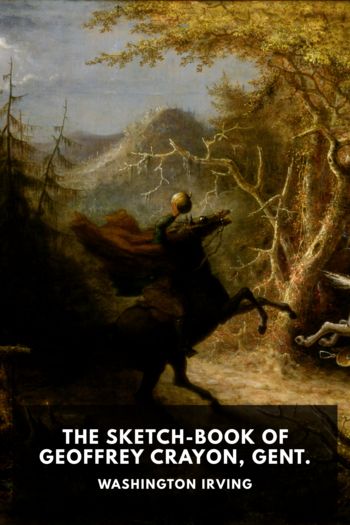Loverly:The Life and Times of My Fair Lady (Broadway Legacies) McHugh, Dominic (snow like ashes series txt) 📖

Book online «Loverly:The Life and Times of My Fair Lady (Broadway Legacies) McHugh, Dominic (snow like ashes series txt) 📖». Author McHugh, Dominic
It is true that the German film introduces a scene in a racecourse that Shaw’s Pygmalion did not contain, but this incident bears very little relationship to the Ascot scene from My Fair Lady. The Eliza of the musical is excited, not bored; she does not see a friend, ask for ice cream, or witness a crime; Higgins does not reprimand her in the musical, but rather stifles a laugh; the specific location of Ascot in the show—and the fact that it is the opening day—is far from insignificant, given the wider social implications; and the key climax in the musical—Eliza causing a public spectacle by losing her control during the horse race—is completely missing. Therefore, it seems likely that Lerner invented the Ascot scene without knowing about the German film.
Lerner’s letter makes obvious his intention to embrace several sources for the Fair Lady script, including the play, the new scenes that Shaw wrote for the 1938 British film, and additional situations suggested by his own imagination. Perhaps the most interesting aspect is the placing of the interval in Lerner’s scenario. Since the play has five acts and its film version has no intermission, the question of how to slice the musical into two acts was important. Obviously, the final moment before an interval should be a climactic one, and at this stage the plan seems to have been to end with Eliza’s preparations for and departure to the ball. Going along with this plan, the published Fair Lady script includes the ball in the first act and has the interval at the end of it; the cliff-hanger is the question of whether Zoltan Karpathy, the Hungarian phonetician who is an ex-pupil of Higgins’s, has successfully discovered Eliza’s secret. However, the 1964 film version reverts to Lerner’s original plan—ending the first half with the departure to the ball—and Trevor Nunn’s 2001 production for London’s National Theatre also took this course. Whereas ending the act with Higgins’s gesture of respect to Eliza when they leave for the ball—he extends his arm to help her through the door—places emphasis on an emotional high in the Higgins-Eliza relationship, ending the act with the ball shifts the focus to the success of the experiment, leaving the characters to work out their problems with each other in the second act. This is just one example of many considerations Lerner had to bear in mind while fashioning the script.
Outline 1: Act 1 only (ca.1952)
None of the outlines discussed here can be dated with absolute accuracy, but it is easy to guess the order in which they were written. The earliest outline comes from Herman Levin’s papers and consists of a thorough five-page description of how the first act was to run.32 Unfortunately, there is nothing at all on the second act, either because it was never completed or because the second half of the document has been lost. It is enough, however, to see in what ways Lerner already had elements of the show’s structure in place, while others are completely unexpected. The outline is reproduced in table 3.1, with the songs and dances separated into their own columns for clarity, and some of Lerner’s description of the action has been slightly condensed where a complete reproduction seemed unnecessary.
In Outline 1, we can recognize several songs from the final score, including “The Rain in Spain,” “The Ascot Gavotte,” and “Just You Wait” (as well as “Say a Prayer,” which was cut during the New Haven tryouts). This suggests that Lerner and Loewe had already set to work on the score by the time the outline was written. On the other, the presence of scenes or elements that did not make it into the show (such as opening at Limehouse instead of Covent Garden) implies an early date. Lerner’s letter of May 10, 1952 (quoted earlier) indicates that he already had strong ideas of how the structure of the musical might work, and in all likelihood this is the outline referred to in his letter: there is a particular focus on Eliza’s character, which would make sense if Outline 1 was the one produced to try and persuade Mary Martin to play the part. If this is so, it means that the songs mentioned above were composed (or at least partly conceived) in 1952, rather than in 1954–55 as is usually assumed, and Outline 1 is certainly the earliest surviving version of the show.
Taken as a whole, it is striking how vastly this plan differs from the final show. Particularly curious is the change of location of the first scene from the flower market in Covent Garden to a space with a more varied crowd of people (including sailors and Chinese) at Limehouse. One senses the desire to introduce Eliza in an atmosphere of Otherness, but it is not quite clear how Lerner intended to provide a legitimate reason for Higgins and Pickering to be there.33 The omnipresence of Doolittle in this scene—albeit inside the pub much of the time—is significant, showing him to have a greater prominence in Eliza’s existence than is the case in the eventual show. It means that the two dominant male forces in her life are around from the very beginning, and the proposed song “I’m a Good Girl, I Am” ends the tableau neatly.
The early encounter between Higgins and Doolittle is also intriguing: Lerner explains in a note that “The purpose of having





Comments (0)